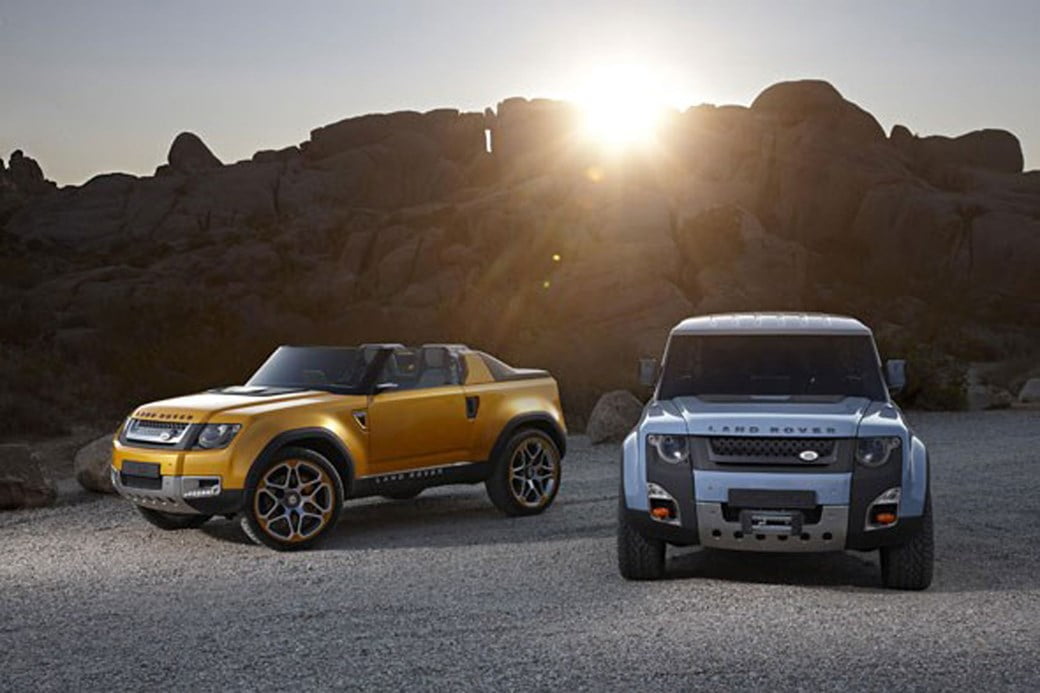A new Discovery in more ways than one: this is the all-new 2016 Land Rover Discovery, spied testing on public roads in Germany.
Under the black and white camouflage, it seems the iconic Discovery silhouette has undergone a significant change. The arrow-straight roofline appears dramatically lower, and the front more rounded, with a similar nose treatment to the smaller Discovery Sport. Seems the days of the high-rise, Lego-block Disco are gone. Shock and indeed horror, for many existing fans we’re sure.
The new, more slim-line form is likely to be the result of a dramatic drop in kerb weight for the 2016 Disco compared with the outgoing model, aided by new, largely aluminium architecture. Ignore the sausage-shaped contours along the car’s flanks – that’s camouflage subterfuge, disguising the body’s actual surfacing below.
Click here to read CAR’s in-depth test of the current Land Rover Discovery.
2016 Land Rover Discovery: the background
The Discovery turned 25 years old in 2014, a year in which it become a family of vehicles as Land Rover launched the Discovery Sport to create a two-model Disco line-up. The car spied here is the fifth-generation replacement for the full-size Discovery, as previewed by the Discovery Vision concept. And whereas the entry-level Evoque is the most radical interpretation of the Range Rover family’s design language, Land Rover’s design director and chief creative officer Gerry McGovern says the bigger Discovery will be more adventurous in its appearance than the smaller Discovery Sport.
The Discovery Sport effectively replaces the Freelander, as Land Rover aligns it brands so there are three families: Range Rover, Discovery, and Defender. ‘One of them is about luxury: Range Rover,’ says McGovern. ‘Leisure, that’s Discovery, and that’s in the plural because at the moment we’ve only got one Discovery, but we’re doing more, starting with the Discovery Sport. And there’s dual purpose, our Defenders. We are going to do a new Defender, or Defenders, a whole new generation. We thought it’s about time as it’s 60 years since the original. And we’re not just going to talk about it either, we’re going to do it…’
What’s the difference between the ‘luxury’ Range Rovers and ‘leisure’ Discovery models then?
According to McGovern, the Discovery family will increase its ‘premium execution’, which will move the new models closer to the Range Rovers, but also serve to broaden their appeal. McGovern says the utilitarian Discovery 3 proved quite polarizing, but the mid-life facelift that turned it into Discovery 4 (with a posher Range Sport interior and no more black plastic body cladding) was much more popular with customers.
To differentiate Discos from RR, the former will be much more versatile, with seven seats, lots of stowage space for families, and practical touches, whereas the full-size Rangie will only ever seat five and the Range Sport, at best, remains a 5+2.
Yet while the full-size Disco is the next Discovery on the way, there are more Range Rovers coming too: ‘They are probably more radical than the Evoque was, or certainly not what you might expect from Range Rover,’ reveals McGovern. ‘One in particular looks fantastic…’
That’s expected to be a new model that’ll sit between the Evoque and Range Sport, and is set to be twinned with Jaguar’s first ever SUV, but McGovern admits there are other markets into which the RR brand can expand: ‘There’s more than one gap, so we are looking at other opportunities to grow, so watch this space…’
What about this new family of Defenders?
If the RR and Disco sit closely together, McGovern says the new line-up of Defenders will stretch out the Land Rover brand. ‘Discovery is getting closer to Range Rover,’ he says. ‘But the Defenders, when you see those coming, they’ll really bring clarity to the three-family scenario. They’re out there, a working tool, probably closest to the original Land Rover heartland, but still relevant.’

And whereas McGovern worries a utilitarian look limits the appeal of the Range Rovers and Discos, it’s less of an issue for Land Rover’s third family (previewed by the DC100 concepts, above). ‘For the Defender it’s something else. There is that utilitarian look, but it’s inextricably linked to the original so you get over it. The Defender is about durability – you kick the hell out of them and they get up for more.’
Will there be more than one Defender?
There will be a number of different Defender models, to help Land Rover sell over 70k units a year, and to appeal to the Land Rover traditionalists who might perhaps be put off by the new Discos and RRs. ‘We need the Defender to wash its wash in terms of investment,’ admits McGovern. ‘So there will be opportunities for different-sized vehicles: in the Middle East, for example, they want really big vehicles; in other markets the appetite is for small vehicles; and I’d argue you need the iconic three-door there as well.’
Not that the styling will be retro, as McGovern says the new models will bear no resemblance to the DC100 concepts: ‘I think the Defender was good for it’s time, but I think we’ve got to be quite radical, and create if we create a vehicle that is special and does resonate with people, they will forget what they had before.’
[“source-carmagazine”]





